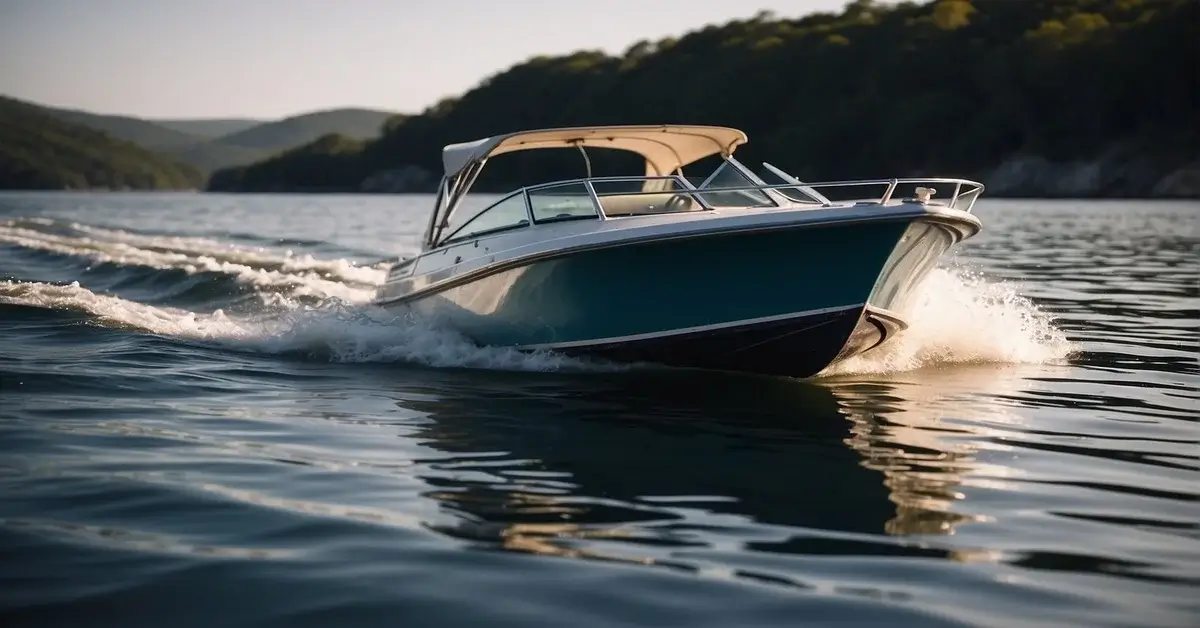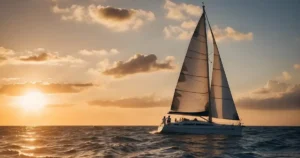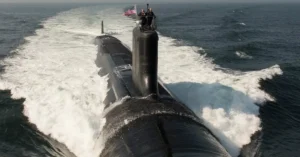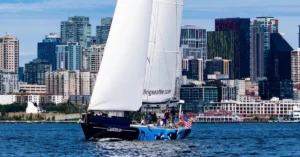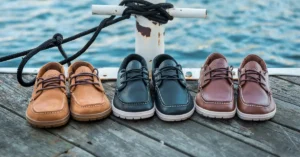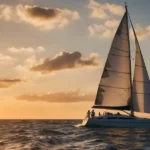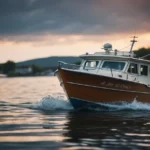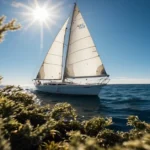Understanding a Deadrise is key to unlocking the secrets of your boat’s performance on the water. This crucial design element shapes how your vessel handles different conditions, from tranquil bays to tumultuous seas.
Dive in as we explore why Deadrise could be the game-changer for your next aquatic adventure! Get ready to make waves with confidence!
Understanding the Basics of Deadrise
When I hear someone asking, “What is Deadrise on a Boat?” it reminds me how this simple concept is fundamental to a boat’s performance. Let’s get a clear view of what deadrise means and how it affects a vessel’s capabilities on the water.
Deadrise Defined and Its Impact on Boat Performance
Deadrise is the angle between the horizontal plane and the hull of a boat. Picturing the V-shape of a boat’s hull, imagine an invisible line slicing through the hull from front to back; this is where we measure the deadrise. A greater angle typically signifies a deeper V-shape, providing a smoother ride in rough waters.
Boat performance is closely tied to deadrise since the angle directly influences the efficiency and handling of the vessel. A sharp deadrise can cut through waves easily, whereas a smaller angle leads to better speed and stability in calm waters.
How to Measure Deadrise and What the Angles Mean
Measuring deadrise requires you to find the angle at the transom — the rear of the boat where the hull meets the water. Transom deadrise is often the most discussed value regarding this measurement. Here’s a step-by-step:
- Place a level against the hull transversely to the keel line.
- Draw a horizontal line where the level meets the hull.
- Measure the angle between this line and the hull at the chine (where the bottom meets the side).
The resulting angle, measured in degrees, is the deadrise. A high number, say 25 degrees or more, means a more profound, sharper V-shaped hull, suitable for heavy seas. On the flip side, lower angles, like 10 degrees or less, indicate flatter hulls that perform better in calm waters and at higher speeds. Choosing the right deadrise angle is a trade-off between a soft ride and high-speed efficiency.
Analyzing Deadrise in Different Boating Applications

When I delve into the term “What is Deadrise on a Boat?” I find that it’s all about the angle of the hull, which greatly influences how a boat handles various conditions on the water. Let’s break down how deadrise impacts stability, ride comfort, and performance across different boating scenarios.
Deadrise and Its Role in Stability and Ride Comfort
The deadrise angle at a boat’s transom is a key design feature that affects stability and ride comfort. A flat-bottom boat offers excellent stability in calm waters and is ideal for leisure fishing. However, a deep-V hull with a higher deadrise cuts through the waves in choppy water, providing a smoother ride.
Fishing Boats and Deadrise: Matching the Hull to the Waves
Selecting the right deadrise is crucial for fishing encounters in shallow waters and the open sea. Skiffs and flat-bottom boats are perfect for calm, shallow water, maximizing stability for a steady boating experience. In contrast, offshore fishing boats benefit from a moderate to deep deadrise, efficiently handling rough waters and minimizing slamming against waves.
Performance in High Speed and Rough Waters: The Deadrise Advantage
High-deadrise hulls on many powerboats and performance vessels offer advantages when speeding over choppy seas. These designs typically have a sharper bow and a deeper V-shape, allowing for better handling at high speed, particularly during sea trials, while contributing to a relatively soft ride despite the boat’s pace.
Boat Types and Their Associated Deadrise: From Flat to Deep-V
Different types of boats showcase varied deadrise angles that cater to specific uses:
- Flat-bottom boats and pontoon boats often boast little to no deadrise, which is great for stability in lakes and calm waters.
- Pontoon boats: Known for their flat design, they deliver a comfortable cruising experience on smooth water surfaces.
- Deep-V hulls provide a smooth ride in open water and are ideal for cutting through ocean waves.
- Ski boats: Typically have a shallow draft and lower deadrise for quick maneuvers during watersports.
Every boat owner should consider the deadrise as part of the boat’s specifications when assessing the vessel’s suitability for their intended use, whether leisure cruising, water sports, or ocean braving. Manufacturers design hulls with deadrise to optimize ride comfort, fuel efficiency, top speed, and overall boating experience.
FAQ – Deadrise

When I first heard “What is Deadrise on a Boat?” I was intrigued by how this concept affects a boat’s performance. Let me share some common questions to demystify this critical design element.
What is a good deadrise on a boat?
A good deadrise on a boat typically depends on its intended use; however, more deadrise is generally considered better for rough waters, as it can provide a more comfortable cruise (Discover Boating).
What does a boats deadrise mean?
A boat’s deadrise is the angle between a horizontal plane and its hull. It measures how deep or shallow the “V” shape of the boat’s hull is, which affects how the boat cuts through water (TGYG).
How vital is deadrise?
Deadrise is essential because it helps determine a boat’s performance and comfort in various water conditions. It affects how smoothly a boat rides, especially at high speeds and in choppy waters, making it a crucial aspect of hull design (Scout Boats).
Understanding deadrise helps you choose a boat that fits your needs, whether you’re looking for smooth sailing on tranquil waters or braving choppy seas. Remember, the right deadrise makes all the difference – share Your Thoughts in the Comments below!

